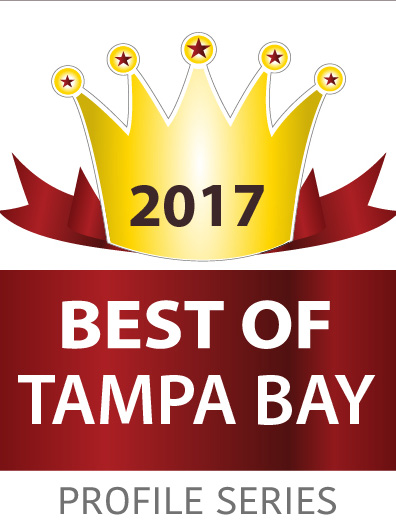Test Your Small Business Finance IQ

Although 40 percent of U.S. small business owners consider themselves to be financially illiterate, 81 percent still handle their own business finances, according to a 2014 Intuit study. The federal government has dubbed April “National Financial Capability Month” in an effort to bring financial literacy to America — and to improve the skills of small business owners and future entrepreneurs.
Putting Your Financial Capability to the Test
Here’s a nine-question quiz to evaluate your small business finance IQ (the answers are below):
Questions1. What’s the most common business structure in the United States?
2. What requirements must be met to switch from a C corporation to an S corporation?
3. Which of the following factors supports an IRS claim that a worker should be classified as an employee, not an independent contractor?
4. Employers can sidestep the requirements of the Affordable Care Act with an “employer payment arrangement” in which the company reimburses participating employees for premiums paid for individual health insurance coverage.
5. What’s the due date for a calendar-year corporation to pay taxes in 2015?
6. When do SBA loans require business appraisals?
7. Small business owners must put up personal collateral to qualify for SBA guaranteed loans.
8. Which of the following financial benchmarking formulas is incorrect?
9. Under U.S. Generally Accepted Accounting Principles (GAAP), private companies can elect to amortize goodwill and certain intangible assets acquired in business combinations for 10 years, rather than test them annually for impairment.
|
Answers1. a. A sole proprietorship is the most common business structure. The IRS received about 5.8 million corporate tax returns, 3.2 million partnership tax returns and 23 million nonfarm sole proprietor tax returns, according to the latest reported data from the Statistics of Income Bulletin (fiscal year 2010). A sole proprietorship is also the simplest form of business ownership, because you needn’t take any formal action to form it, as long as you’re the only owner. But like any business, a sole proprietorship needs to obtain the necessary licenses and permits. Sole proprietorships that operate under a name different from the owner’s most likely will have to file a “doing business as” name that hasn’t already been claimed by another business. There’s no distinction between a sole proprietorship and its owner. The owner is entitled to all profits and is responsible for all business debts, losses and liabilities. This lack of separation has a downside: The owner has unlimited personal liability that extends to liabilities incurred as a result of business or employee actions. Sole proprietors also face challenges when trying to raise money. They can’t sell stock in the business, and lenders may be hesitant to lend to a sole proprietorship because of a perceived lack of credibility when it comes to repayment if the business fails. 2. d. Many private businesses elect to operate as S corporations primarily to take advantage of the federal tax benefits. But not every business is eligible. In order to make the switch, your business must meet all of the requirements listed above, and it must have only allowable shareholders, including individuals and certain trusts and estates. Partnerships, corporations or nonresident aliens cannot own shares in an S corporation. In addition, S corporations cannot be ineligible corporations, including certain financial institutions, insurance companies, and domestic international sales corporations. All shareholders must consent to the S corp election by signing an IRS form. 3. a. The U.S. Tax Court considers seven factors when deciding whether a worker should be classified as an independent contractor or employee for federal employment tax purposes:
4. b. Employer payment arrangements have been a way for smaller employers to help their employees obtain health coverage without the hassle and expense of furnishing a full-fledged company health insurance plan. However, IRS guidance issued in 2013 stipulates that tax-free employer payment arrangements are considered group health plans subject to the ACA market reform restrictions. With a few limited exceptions, such plans fail to meet ACA requirements because, among other reasons, group health plans that are used to purchase coverage in the individual market cannot be integrated with individual market policies. The ACA market reform restrictions penalize the use of employer payment arrangements to subsidize or reimburse employees for individual market health insurance policies — if more than one employee participates in the arrangement. Similarly, employers cannot directly pay premiums for individual market policies on behalf of their employees without triggering the penalty. The bottom line is that the market reform penalty is so punitive that employer payment arrangements are basically off limits unless they only cover one worker. Under IRS Notice 2015-17, however, small employers with employer payment arrangements in place will not be penalized unless they maintain them beyond June 30 of this year. 5. e. The IRS generally requires a corporation to make regular installment payments if management expects its estimated tax for the year to be $500 or more. Installment payments are due by the 15th day of the 4th, 6th, 9th, and 12th months of the corporation’s tax year. So for companies with a calendar year end, installment payments are due on April 15, June 15, September 15, and December 15. You can use Form 1120-W, “Estimated Tax for Corporations,” as a worksheet to figure each required installment of estimated tax or consult with your tax professional. If the corporation does not pay a required installment of estimated tax by its due date, it may be subject to a penalty. 6. d. The SBA requires a business valuation from a qualified appraiser for 7(a) loans when the proceeds will be used to finance a “change of ownership,” but only if the amount being financed from all sources (including non-SBA loans and seller financing) — less the appraised value of real estate and equipment — is more than $250,000. A “close relationship” between the buyer and seller (such as a sale between a mother and her son) may also trigger the SBA business valuation regulations. 7. c. Maybe. If the forms of business collateral are equal to 100 percent of the loan, as a borrower, an owner won’t have to pledge personal assets to obtain an SBA guaranteed loan. But often, the principal borrowers will need to pledge personal assets, such as real estate and investment accounts. Keep in mind that approval for an SBA guaranteed loan is not denied solely due to a lack of collateral — the loan may be approved based on other qualifying credit factors, such as the experience level of management or the company’s credit rating. 8. c. Sales minus cost of sales equals gross profit, not net income. To arrive at net income, you must also adjust for selling, general and administrative expenses, discontinued operations, income taxes, and nonoperating revenues, expenses, gains and losses. 9. a. True. In 2014, the Financial Accounting Standards Board (FASB) relaxed the reporting requirements for private business combinations under GAAP. Now private companies have the option to amortize goodwill and certain intangible assets acquired in business combinations for 10 years (or less) instead of only testing them for impairment. They can also combine noncompetition agreements and certain customer-related intangibles with goodwill. FASB is still deciding whether to extend these simplified merger and acquisition reporting options to public companies and not-for-profit entities. |
Making the Grade
Whether you’re a seasoned small business owner or a new one — or you have dreams to be an entrepreneur — running a successful operation requires a broad mastery of tax, financial reporting, financing and other strategic issues. Your CPA and attorney can provide more in-depth guidance and answer any questions you may have about operating a business.
© Copyright 2015. All rights reserved.
Brought to you by: McClanathan, Burg & Associates, LLC




